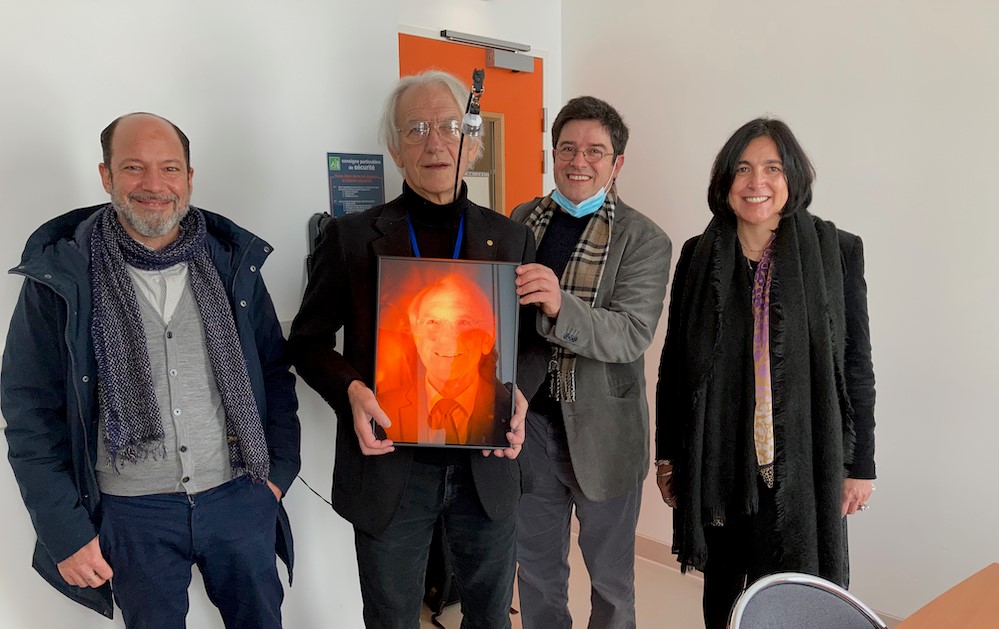Physics Nobel Prize Laureate Gérard Mourou gets an unexpected gift: his own holographic portrait

In 2018, Gérard Mourou (from the École Polytechnique in Palaiseau, France) was awarded half the Nobel Prize in Physics, jointly with his former student Donna Strickland, for the invention of a revolutionary technique – chirped pulse amplification, or CPA – for generating extremely intense laser pulses. Their work has had an enormous impact in many fields of science and has enabled new applications, from laser particle acceleration to advanced eye surgery.
Prof. Mourou received an unexpected gift during Sphere’s visit to the École Polytechnique: a true-to-life holographic portrait of himself. This portrait can be hung on a wall and only requires illumination from a small lightbulb or LED, like a traditional painting or photograph. However, and totally unlike the latter, the holographic image is fully three-dimensional and an exact replica of the light wavefront emitted by the original subject. In other words, the holographic image is practically undistinguishable from reality and very impressive to look at. The portrait now given to Prof. Mourou was produced from the so-called master hologram shot at the laser laboratories of the Department of Physics and Astronomy, in the Faculty of Sciences of the University of Porto in Portugal, during a visit by Prof. Mourou back in April 2019. Unlike in most photographic/digital techniques, the master hologram was done in one shot using a 30 nanosecond light pulse from a high-energy Ruby laser, without the need of taking multiple exposures from different angles.
A master hologram however requires a laser for its observation, which is not practical. The solution involves creating a second hologram (a special holographic copy) from this master that can be viewed with normal white-light. Because of the pandemic, production of the white-light viewable copy was on hold for many months but was recently resumed, and so Prof. Mourou finally got his copy and met his holographic self.
*This and other unique properties of holography that distinguish it from traditional photography stem from the pioneering work of Dennis Gabor, who was a professor at Imperial College London and received the Nobel Prize in Physics 1971 for his invention and development of the holographic method.